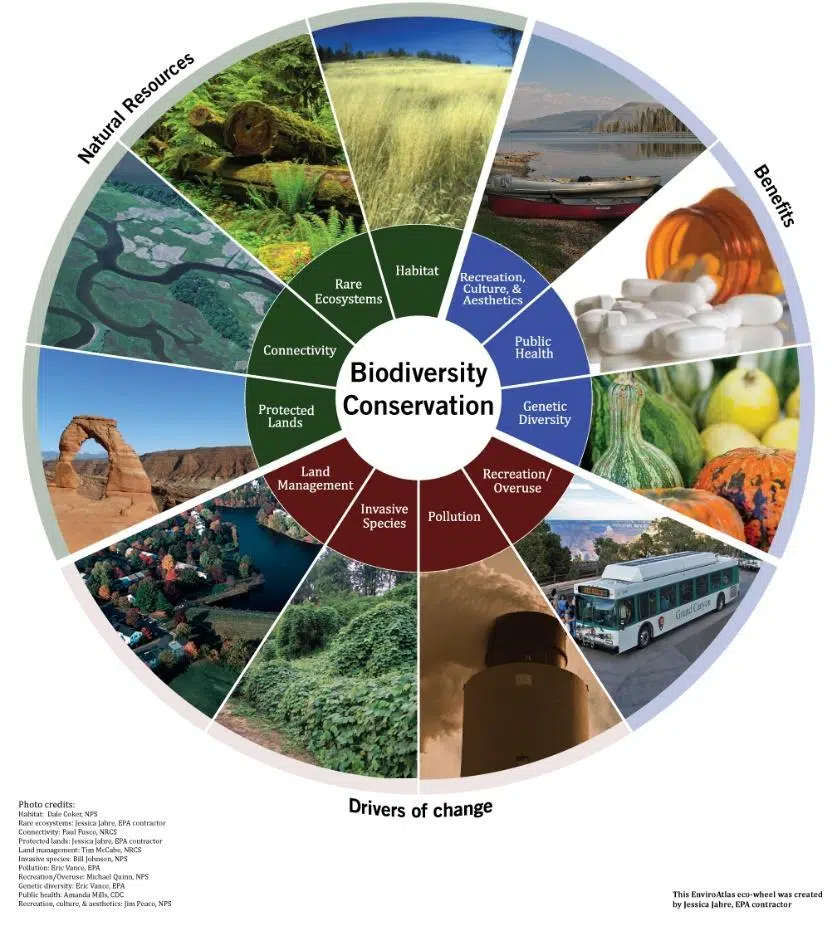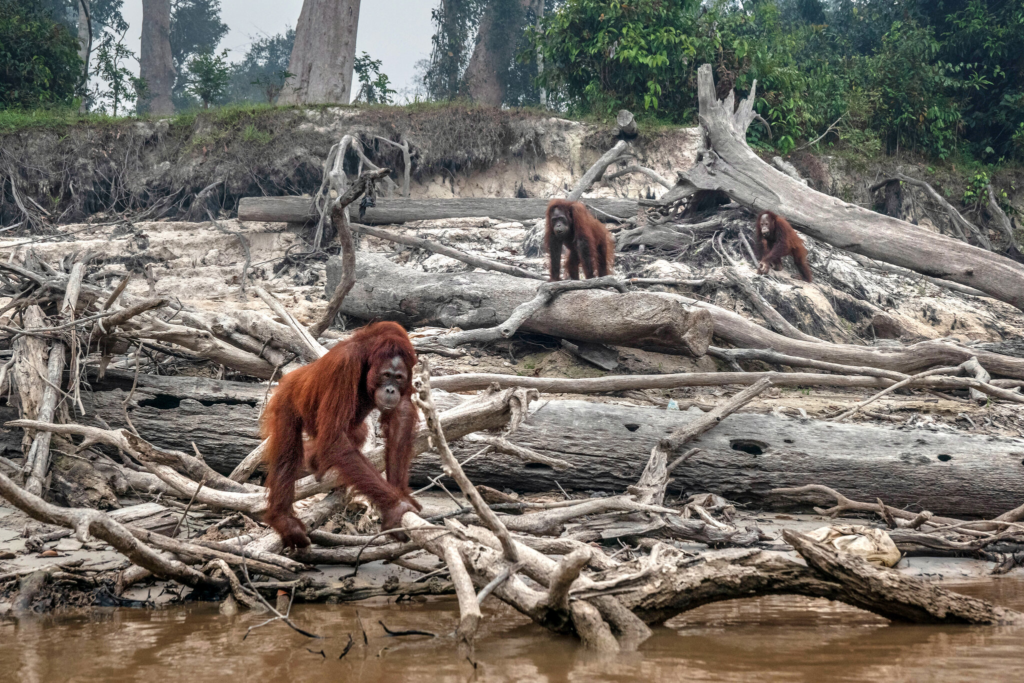Biodiversity loss is one of the most urgent environmental challenges today. In the United States, land use changes, urban growth, agriculture, and industrial activity have placed many species and ecosystems at risk. The issue goes beyond borders, as ecosystems are interconnected and climate change is a global crisis. Addressing biodiversity loss requires both strong domestic actions and international cooperation.
This article explores biodiversity loss in the U.S., the role of land use, conservation initiatives, and how the U.S. collaborates globally to protect ecosystems.
What is Biodiversity Loss?
Biodiversity refers to the variety of all living things on Earth, including plants, animals, fungi, and microorganisms, along with the ecosystems they create. It plays a vital role in providing food, clean air and water, and regulating climate.
Biodiversity loss happens when species go extinct, habitats are destroyed, or ecosystems become unbalanced. In the U.S., some of the main causes include deforestation, overfishing, urban expansion, industrial pollution, and rising global temperatures. Research shows that nearly one-third of U.S. species face the risk of extinction, including pollinators, amphibians, and bird populations.

Land Use and Its Role in Biodiversity Decline
How humans use land has a direct impact on biodiversity. Expanding cities, large-scale farming, and industrial activities are fragmenting habitats, reducing the ability of species to survive.
Agriculture and Farming
Modern farming often relies on monoculture, where a single crop is grown over vast areas. This reduces ecological diversity, while heavy pesticide and fertilizer use damages soil health and water quality, affecting both land and aquatic species.
Urban Development
As urban areas grow, wetlands, forests, and grasslands are replaced with infrastructure. This destroys natural habitats and leaves wildlife with fewer spaces to thrive.
Resource Extraction
Mining, drilling, and logging permanently alter ecosystems. These activities not only remove habitats but also spread pollution into surrounding lands and waterways.
Conservation Efforts in the United States
Despite the challenges, the U.S. has made progress in protecting biodiversity. National parks, wildlife refuges, and marine protected areas are crucial for conservation.
Protected Areas
Millions of acres have been preserved as national parks and reserves. Places like Yellowstone, the Everglades, and Alaska’s wilderness areas serve as safe havens for diverse species. Expanding these protected areas continues to be an important goal.
Endangered Species Act
Since 1973, the Endangered Species Act (ESA) has helped protect species at risk. It restricts harmful activities and requires recovery plans. Success stories include the recovery of the bald eagle and the American alligator, showing that effective laws can make a difference.
Community and Private Efforts
Local communities, NGOs, and private landowners are increasingly involved in conservation. Projects such as habitat restoration, wetland conservation, and sustainable agriculture play an essential role in strengthening biodiversity protection.
International Cooperation in Conservation
Biodiversity loss is not just a local or national issue. Species and ecosystems are interconnected across borders, and many challenges require global cooperation.
Multilateral Agreements
The U.S. takes part in global agreements such as the Convention on International Trade in Endangered Species (CITES), which regulates the global wildlife trade. Climate agreements also contribute to biodiversity protection by addressing greenhouse gas emissions that harm ecosystems.
Partnerships with Other Nations
Through programs like USAID, the U.S. supports conservation projects abroad. These efforts include protecting rainforests in South America, coral reefs in Asia, and endangered species in Africa.
Global Frameworks
The U.S. engages in discussions on international biodiversity frameworks, which set targets for conservation, restoration, and sustainable resource use. These frameworks encourage countries to share data, strengthen policies, and work together to protect ecosystems.
Climate Change and Biodiversity
Climate change is one of the greatest threats to biodiversity. Rising temperatures, shifting weather patterns, and extreme events are transforming habitats worldwide.
In the U.S., wildfires, droughts, and hurricanes have increased in frequency and intensity, leaving less room for species to survive. Rising sea levels are damaging coastal ecosystems, while warming waters are changing fish populations. Protecting biodiversity therefore requires addressing climate change as part of the solution.
Challenges Facing U.S. Conservation
Even with strong policies and community involvement, there are still major challenges:
- Lack of funding for many conservation programs.
- Shifting environmental policies with changes in government.
- Limited ability to act on privately owned land.
- Low public awareness of biodiversity’s importance.
These challenges make it harder to achieve long-term success in conservation.

Why Biodiversity Matters for People
Biodiversity is not only about saving plants and animals. It directly affects human health, food, and the economy.
- Pollinators like bees are essential for agriculture, and their decline threatens food production.
- Many medicines are developed from natural compounds found in plants and animals.
- Tourism linked to nature generates jobs and supports local economies.
Protecting biodiversity ensures both environmental stability and human well-being.
Pathways for the Future
To strengthen biodiversity protection, the U.S. can adopt a multi-layered approach.
- Expand the number of protected areas, especially for marine ecosystems.
- Encourage sustainable farming and better land-use practices.
- Strengthen international cooperation and funding for conservation projects.
- Invest in research and new technology, such as satellite monitoring of ecosystems.
- Promote public education and awareness campaigns to involve more people in conservation.
Conclusion
Biodiversity loss in the U.S. is a major challenge driven by land use changes, urbanization, and climate change. Yet, progress in conservation shows that recovery is possible when strong policies and community involvement are combined.
The U.S. has the opportunity to lead not only at home but also on the global stage. By working with international partners and investing in long-term solutions, the U.S. can help reverse biodiversity loss and secure a healthier, more sustainable future for all.
Do Follow USA Glory On Instagram
Read Next – U.S. Space Policy: Commerce, Security, and Exploration






